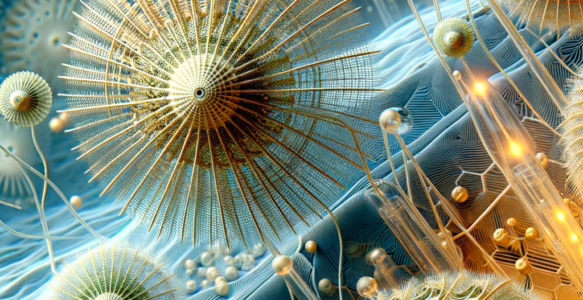In the fascinating intersection of nature and technology, diatoms—microscopic algae with intricate silica shells—emerge as a source of inspiration for cutting-edge engineering solutions. These natural marvels exhibit a complex architecture that combines lightweight design with remarkable mechanical resilience, making them an ideal model for bio-inspired innovations, particularly in the field of vibration management in lightweight structures.

The Diatom Blueprint: A Path to Innovation
Diatoms possess delicately structured shells that demonstrate an array of lightweight design principles. These natural structures, honed by millions of years of evolution, are not just marvels of biological engineering but also offer valuable lessons for modern technical applications. Their complex shell patterns, which include combs, ribs, and bulging features, are not only aesthetically pleasing but also functionally significant, providing diatoms with the ability to float in water and protect themselves from predators. Inspired by these microscopic organisms, researchers have embarked on a journey to transpose the principles observed in diatom shells into the realm of engineering. The aim is to harness these patterns to improve the mechanical properties of technical products, with a special focus on enhancing their vibrational characteristics, specifically eigenfrequencies. Eigenfrequencies are crucial in engineering as they determine the natural vibration frequencies of structures. By learning from diatoms, engineers hope to design structures that can avoid resonance, a phenomenon that occurs when the frequency of external vibrations matches the structure’s eigenfrequencies, potentially leading to structural damage.
The Study: Simulating Diatom-Inspired Designs
A groundbreaking study explored the potential of diatom-inspired designs in altering the eigenfrequencies of dome structures. Through numerical simulations, researchers meticulously crafted models based on diatom shells, incorporating patterns of combs, ribs, and bulges. These models were then analyzed to understand how different patterns influence the structures’ vibrational characteristics.

The findings were illuminating. Different structural patterns significantly impacted the eigenfrequencies of the models, with certain configurations showing a strong potential to shift these frequencies away from the danger zone of resonance. This ability to alter eigenfrequencies effectively opens up new avenues for designing lightweight, yet mechanically robust structures that can withstand vibrational stresses without the need for additional damping or mass, which are traditional solutions that contradict the principle of lightweight design.
Read more about this topic:

